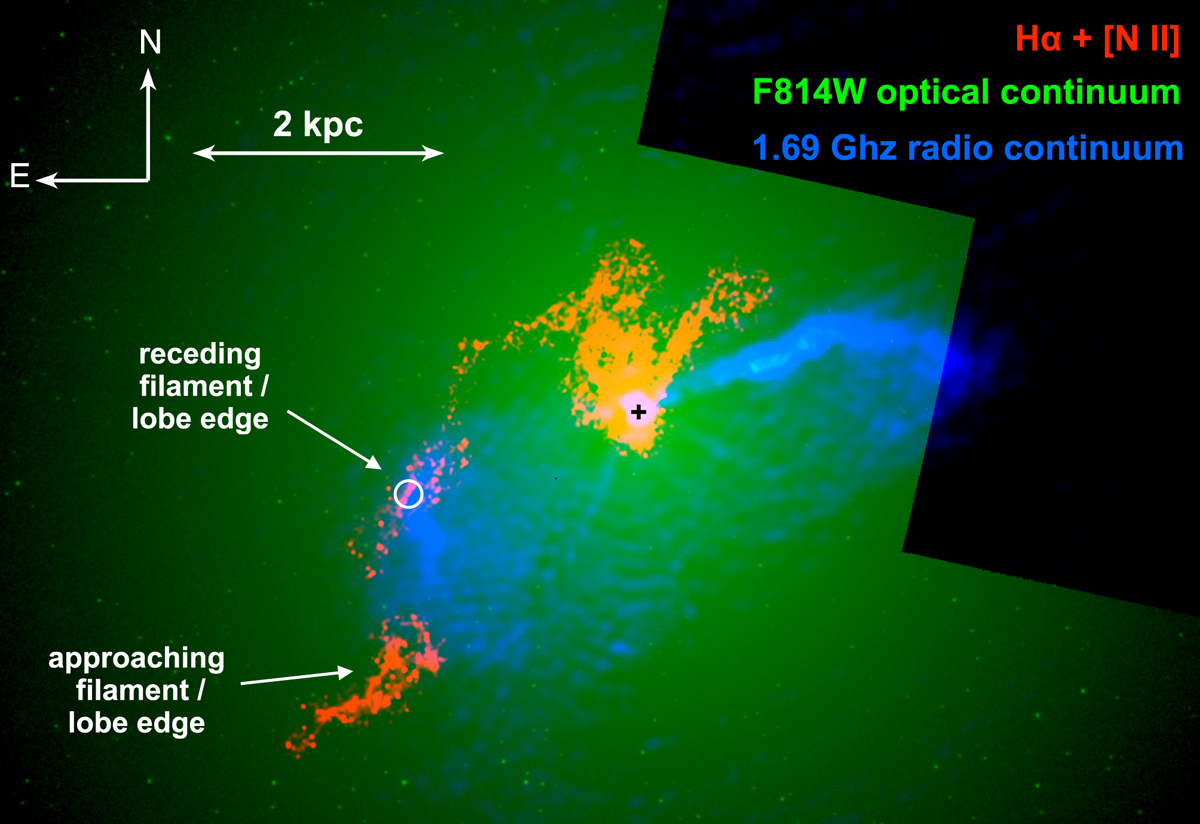Fig. 11.

Multiband image of the center of M87, constructed from archival HST-WFPC2 (red and green) and VLA (blue) data as described in Sect. 7.1. Note that the superposition of red and green can appear yellow in the central nebula if this figure is printed. The presence of the filaments at the outer projected edge of the E radio lobe is obvious, and based on Hα and [C II]λ158 μm measurements, plus our own FUV measurements, the northern filament is receding relative to M87 at vr ≈ 140 km s−1, while Hα and [CII]λ158 μm show that the southern filament is moving toward the Earth relative to the motion of M87 by about 100 km s−1. We hypothesize that these filaments represent the two faces of the expanding radio bubble. A natural explanation for the blueshift of [Fe XXI] in our sightline (indicated by the white circle) is that the filamentary emission arises from the receding edge of the lobe while the [Fe XXI] emission arises from the approaching edge of the lobe, which is at a different temperature T ~ 107 K.
Current usage metrics show cumulative count of Article Views (full-text article views including HTML views, PDF and ePub downloads, according to the available data) and Abstracts Views on Vision4Press platform.
Data correspond to usage on the plateform after 2015. The current usage metrics is available 48-96 hours after online publication and is updated daily on week days.
Initial download of the metrics may take a while.


